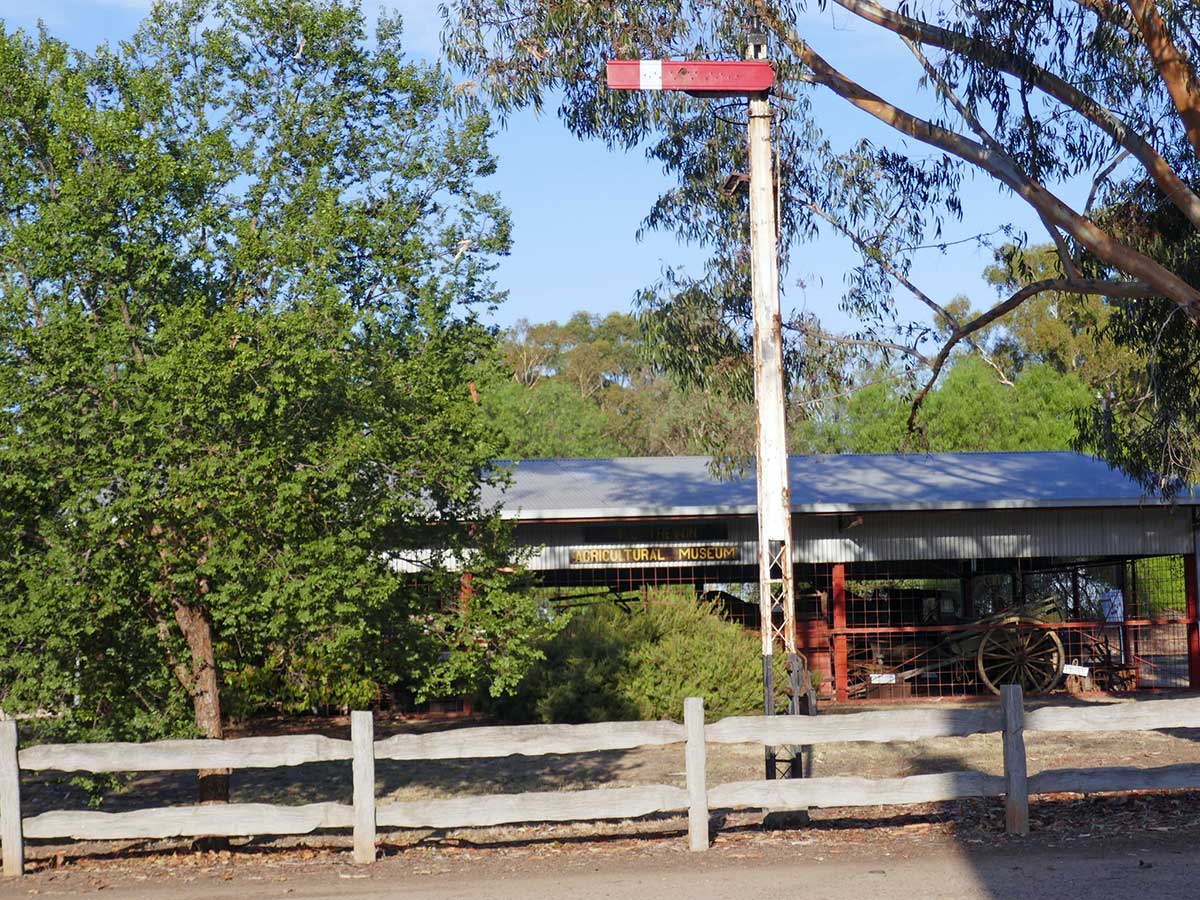
The sleepy village of Devenish is not far from the city of Benalla, and 230km N of Melbourne. Devenish and the surrounding area has a population of less than 200. Its Post Office opened in 1877 as Broken Creek and was renamed Devenish in 1878. An earlier office dating from 1870, Major Plains, was known as Devenish from 1874 until 1878.
Devenish and its neighbour, St James, came into being as a result of selectors taking up land in the district. An increasing number came to the district and took up selections, and it was soon established the district could produce good harvests, plantings of wheat, barley and oats were increasing, but getting them to market was a problem. As the numbers grew, a campaign soon got underway for a spur line to be built north from the main railway at Benalla to service the region which had primitive transport options.
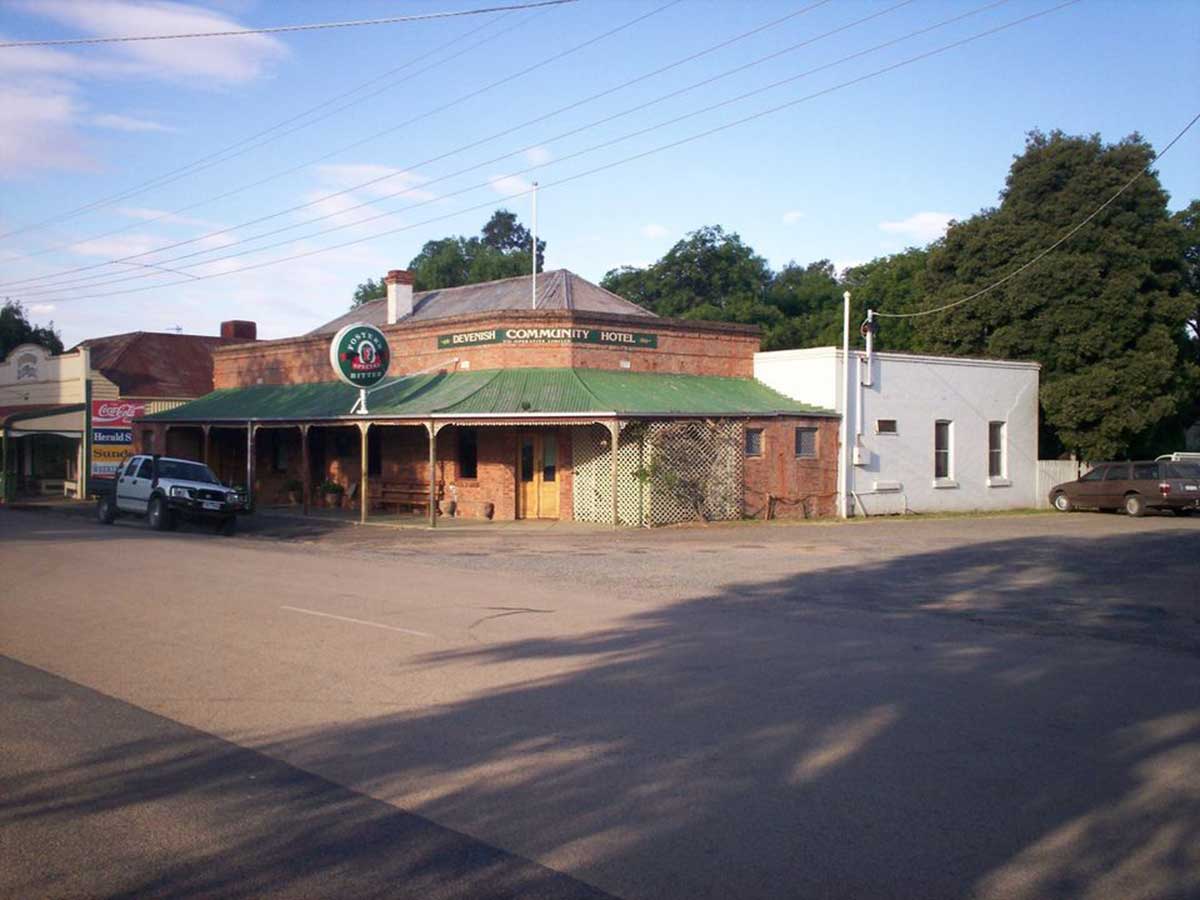
Devenish Hotel
Delegations from competing localities went to meet the State Minister for Railways and well-attended public meetings were held. Construction of railways was government policy. In the last days of 1880, the Railway Construction Bill was passed by the Victorian Parliament approving construction of a number of railway lines including one from Benalla terminating in the Parish of St James.
There were to be three main stations on the line, Goorambat, Devenish and St James. The line took one year to build and the first train from Benalla pulled in to Devenish station on 3 September, 1883. It was the intention of the Government that the line would be extended to Yarrawonga and this commenced in mid-1885 and the line opened for traffic on 6 May, 1886 with a station at the existing town of Tungamah.
During the late 1800s/early 1900s, Devenish was a vibrant little community. It boasted a number of hotels, a Post Office, a butter factory, two general stores, blacksmith, bacon factory, baker's shop and three churches. The first Roman Catholic Church was built in Devenish in 1883 at No. 959 Devenish Road. It was decommissioned in 2005 and put up for sale. The town had an Australian Rules football team that formed in the early 1890s, initially competing in the Benalla- Yarrawonga Line Association, and later in the Benalla & District Football League until the league folded due to lack of players. Premierships were won in the years 1902 and 1909, then again in 1914, 1922 and 1929.
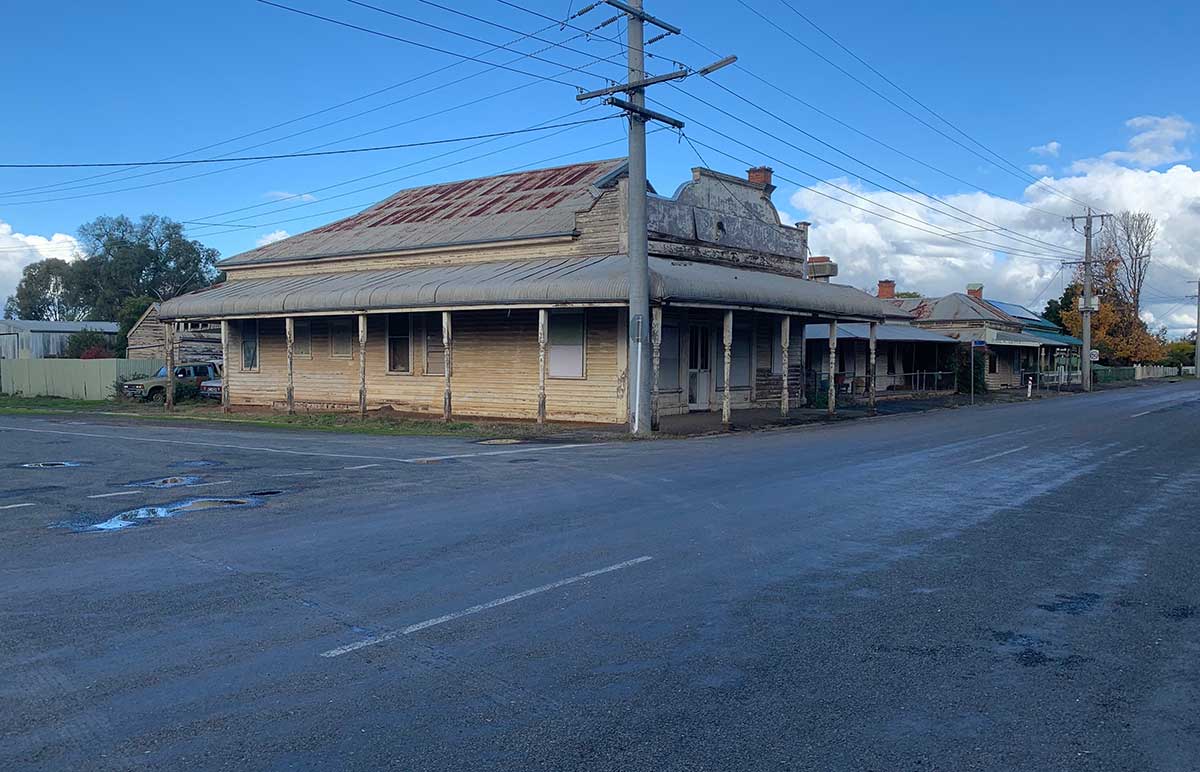
Devenish bacon curing factory
The advent of road transport brought major changes to the village. Local industry such as the bacon and butter factories could not compete with goods brought in by road from Benalla and other regional towns, and were forced to close. The growing popularity of road travel also led to a reduction in passenger traffic on the railway line. The passenger rail service closed in December 1978, resulting in the closure and decommissioning of the railway station at that time. A limited bus service now operates between Benalla and Yarrawonga.
The Benalla – Yarrawonga line is still used for the seasonal movement of grain deposited by farmers in the operating silos along the line, including the concrete grain silos of Devenish that were built between the railway line and the main street, and opened to receive wheat in December 1943. Later the Bulk Oat storage building was built in 1965. The grain silos have become the new drawcard for the town, as part of the popular Silo Art Trail.
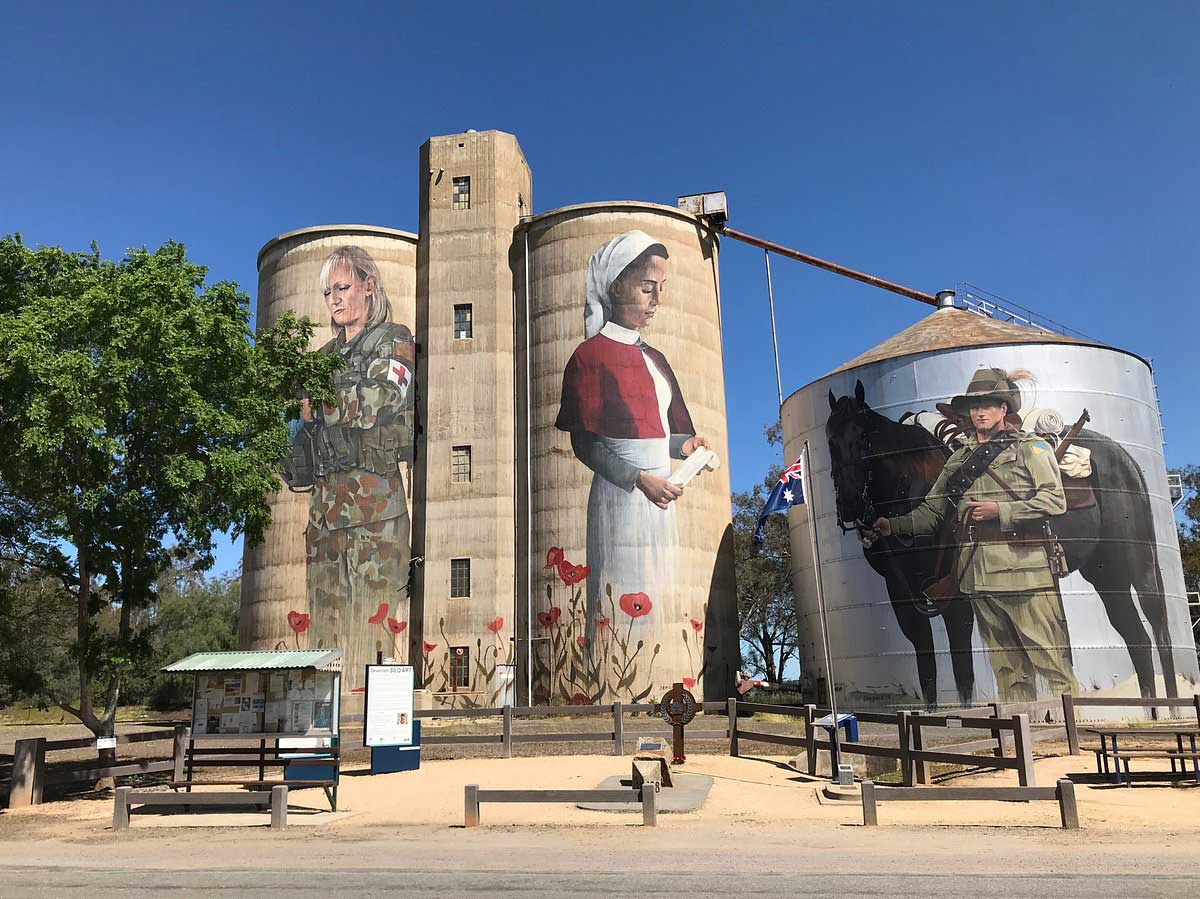
The Graincorp Devenish Silos artwork was unveiled on Anzac Day Eve 2018 and coincides with the 100 year centenary of the end of the First World War. The artwork is of both a First World War nurse and a modern day combat medic. Fifty young men and women from the Devenish community enlisted in military service for the First World War. April 2019 has seen the third silo installation completed with recognition to the Lighthorse men. The Silo’s were completed by artist Cam Scale.

Goorambat silo art
The paintings on the wheat silos of Devenish are a popular feature created by North Vic Trails, a non-profit community group trying to help regional towns of North East Victoria that have suffered as a result of drought, bushfires and COVID 19 restrictions. By promoting the silo art, other artworks and features for small town communities, the group hopes to increase tourism to the northern regions of Victoria. The Devenish Silos are part of the North East Victoria Silo Art Trail, which can be completed in approximately 2 hours, though much longer is required if you really want to take in the landscape in all its glory. For directions, pop into the Benalla Visitor Information Centre.
From Benalla drive on to the small town of Goorambat, where you'll find two works of public art. The grain silos feature three works by Melbourne street artist Jimmy Dvate. 'Sophia' was painted by Adnate and its his depcition of the female aspect of the Holy Trinity on the wall inside the Uniting Church. Continue along the trail to the town of Devenish, where Cam Scale's three towering murals pay homage to local community involvement in military service. They depict a Word War I Nurse, a modern Combat Medic and a Lighthorseman with his Steed. Continue on for the short drive to St James, where local Benalla artist, Tim Bowtell has dedicated this mural to Sir George Coles, a St James local who founded Coles supermarkets.
Next on the trail is Tungamah, where Sobrane Simcock was the first Australian female street artist to participate in the silo project, painting dancing Brolgas and a Kookaburra onto the privately owned Tungamah Silos in 2018. These silos were updated in 2019. Finish your journey along the North East Victoria Silo Art Trail in the Winton Wetlands, where Guido van Helten painted portraits of three local Country Fire Authority (CFA) volunteers on a water tank in 2017. The tank can be found along the self-drive Art Trail within the wetlands, featuring works such as 'Martins Barge' and the famous 'Fish Trees'. Access to the Winton Wetlands is via an unsealed road.
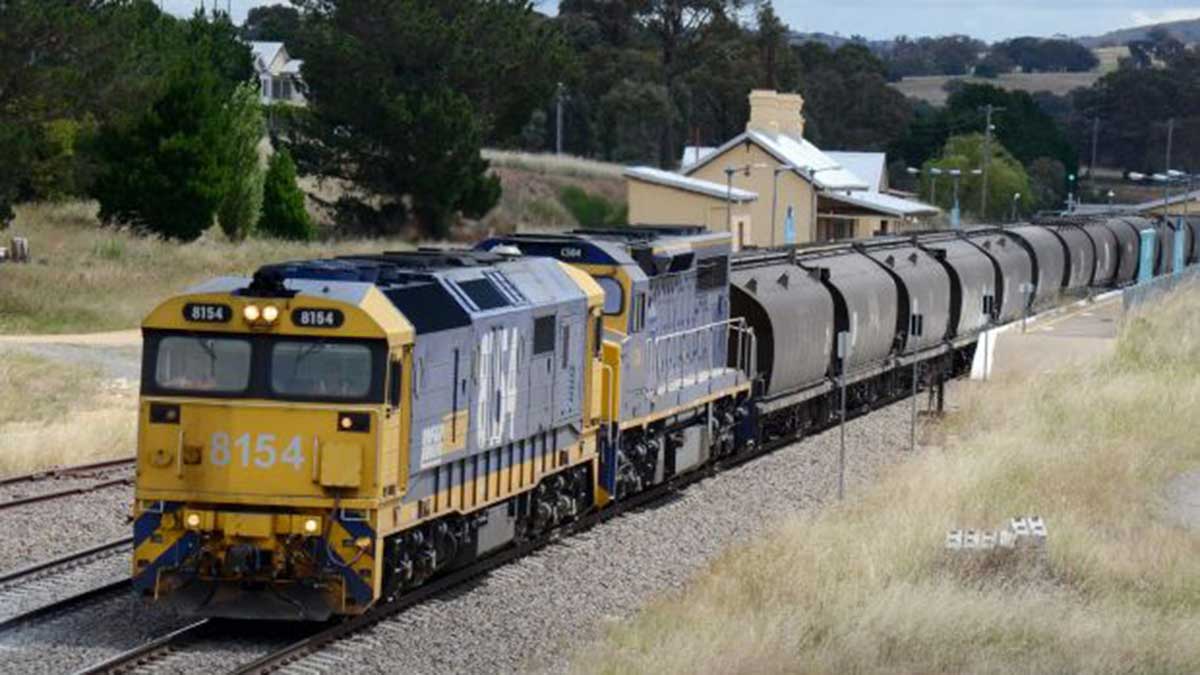
The railway line through Devenish is today a freight-only railway line that branches from the main North East railway at Benalla station and runs across the Victoria-New South Wales border to the town of Oaklands, New South Wales. The first section of line opened in 1883 as a 32-kilometre branch line to St James, at the same time as the extension of the main line to Albury in New South Wales. In 1886, the line was extended another 32 kilometres to Yarrawonga, on the southern bank of the Murray River, which formed the colonial and, later, the state boundary between Victoria and New South Wales.
Under the 1922 Border Railways Act, the line was extended another 61 kilometres to Oaklands, New South Wales, where it met the existing New South Wales branch line, thereby becoming a break-of-gauge location. Although the construction of the extension was completed in 1932, trains on it were operated by the Railway Construction Branch, mostly using a rail tractor as motive power, until the line was formally handed over to the Victorian Railways in August 1938. There was no turntable at the terminus, so steam locomotives had to operate tender-first when running to Oaklands.
During World War II, additional sidings of both Victorian broad gauge and NSW standard gauge were provided, to serve Australian defence installations which were located at Oaklands. There was no passenger service to Oaklands at first but, in December 1946, a twice-weekly service began, operated by a rail motor. That service had been discontinued by the early 1950s. The last regular passenger service on the line was between Benalla and Yarrawonga on Saturday 9 December 1978.
With the opening of the North East standard gauge line in 1961, the line had standard gauge track at both ends, in addition to the broad gauge via Benalla. Gauge conversion of the line was proposed at various times, including by the Victorian State Government in 2001 with a proposed completion data of late 2003. The last broad gauge train to run on the line was a Pacific National grain service in May 2007.
In 2008, agreement was reached to convert the North East railway line from broad gauge to standard gauge, which would have left the Oaklands branch as an isolated and useless spur. The local MP reported that the cost of converting this 125 km branch to standard gauge was just over $13 million. In October 2008 the Victorian State Government announced that an upgrade would take place. The conversion was completed in December 2009, at a cost of $16.5 million, with nearly 50,000 sleepers replaced. The first revenue service on the converted line was an El Zorro grain train on 10 March.
More recently, the line has seen numerous grain trains from both Pacific National and Southern Shorthaul Railroad. The line has continued to deteriorate during this time, with numerous bouts of emergency repairs carried out on the line during 2021; the line now has a 30kph speed limit from Benalla to Yarrawonga, and a 20kph limit from Yarrawonga to Oaklands. It also has a 10kph limit for the final 9 km of the line into Oaklands. As at 28 November 2021 trains are banned from using the line between the hours of 1200 and 2000 if the Yarrawonga weather forecast is 32 °C or higher.
Design by W3layouts